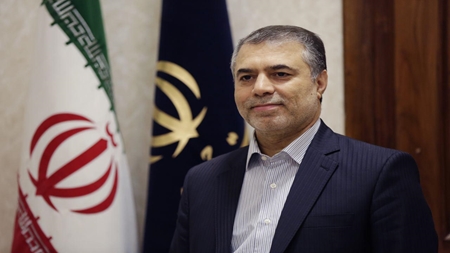How to learn from the “Pelasko” accident
A knowledge-based opportunity
A knowledge-based opportunity

Regardless of all the sorrow brought by the heartbreaking and tragic accident of “Pelasko”, this incident was a wake-up call for all us and reminded us to be more aware of our technical and management weaknesses. We paid a huge price to learn that which areas of our management are more vulnerable and which parts are more at risk. In other words, this incident taught us that which areas require empowering. Instead of looking for someone to blame, any common sense would decide to fully contemplate over the incident in order to identify practical and theoretical weaknesses and recognize the causes of this tragedy. Without a doubt, senior managers have formed workgroups to comprehensively review the accident and evaluate all of “our” the weak and strong aspects of our reaction against this phenomenon. By doing so, we might be able to prevent the occurrence of similar incidents in the future. We should consider the prevention, inhibition and reduction of costs all together.
However, what really matters about our approach is to employ the up-to-date technologies to deal with accidents. We should take effective steps by updating our data and localizing science and technology. Most importantly, we must attempt to make the services provided for dealing with crisis (of any kind) knowledge-based. We have exclusively talked about the “knowledge-based” concept before and how to make products knowledge-based. Now, we have to emphasize that services must be knowledge-based as well. When we talk about knowledge-based organizations, such as fire stations, emergency rooms and hospitals, we do not just mean the fire fighting equipment or ambulances. Knowledge-based organization does not mean the import and production of advanced and modern equipment. While no one denies the importance of updated equipment, and it was also confirmed in “Pelasko” incident that there are some weaknesses regarding the modernity of our tools and equipment, we just want to say that knowledge-based concept is not just about equipment. In fact, concept must be considered broader; as a comprehensive management tool.
As the year 2015 was different than 2014, our crisis management must be updated and be coordinated with modern facilities of the world. If a similar incident would have happened in 1967, no one other than the neighbors of that building would know about the accident. In addition, just the official media reporters were the only people able to report about the accident. In fact, the public would no about the abilities or weaknesses of our fire department. On those days, we would learn about an accident like this 24 hours after the incident through newspapers or radio. However, our society is equipped with a powerful cyberspace, which can distribute news among people very quickly. It only took a few minutes for people to send pictures and news about the “Pelasko” building to each other. The question raised here is that did our crisis management use this extraordinary tool as well? Did anyone think about using the telegram or social networks to directly interact with people and do his job through that? With regard to this number of smart phones in our community, don’t you think it is time to think about an application for accidents?
I would like to point out something that happened during this process in order to better show the power of the cyberspace. At the peak of sending of conflicting news by the ordinary people, without attention to official news centers, a news was spread about announcement of the blood center for need for blood. A few minutes later, we received some pictures from the blood donation center, showing people that are eagerly rushing to this center to donate blood. Meanwhile, there was no official announcement for this action what so ever. I believe that crisis management should benefit from this amazing power of the cyberspace. Regardless the social networks, the digital world has significantly improved over the past years. Today, a manager could manage his organization from a distance using a smart phone. For instance, we can observe the contents of our fridge in India from England and provide anything that is needed from this distance. Science has progressed so much that smart houses have been developed so that we could be able to control and observe our house situation without a direct interference. Even old houses can be turned into smart houses with a small cost. With the technology of today, we can identify the weaknesses and problems of our buildings.
A simulator, which is generally related to pilot training, has now entered new areas. By providing a maneuver and recreating the real situations in the virtual world, we can learn about our strengths. For example, if we design a fire fighting stimulator, then we can recognize our problems and know in which situations we are failing. One meaning of localization of technology is to coordinate ourselves with our natural geography and culture of our region. For instance, the streets of the South of our city are very narrow and it is not possible to use huge machineries in those areas. Therefore, we have no choice but to design new tools and devices tailored to the condition of this region so that the possibility of extinguishing fire and rescuing the accident victims increases. It seems that improvement of the “research and development” unit could lead to more knowledge-based and cost-effective ideas.
Besides, the concept of education based on new technologies must also be considered. Interesting and scientific indirect training could affect the behavior of our citizens and decrease the expenses of an accident. Imagine if all the people, that surrounded the building and blocked the path of ambulances and fire trucks, knew what to do in such situations prior to the incident, there would definitely be less deaths.
In the knowledge-based field of science, culture building with art must not be neglected. Specifically, the art of cinema can teach us about earthquakes, fires, floods, tsunamis, volcanos, wars, diseases and unexpected events and how to act when faced with one of these disasters. Skilled fire fighters believe that both the behavior of people and officials toward these accidents were changed after displaying the movie of “The Inferno Tower”. There is no time for covering all the knowledge-based aspects in this short note. Elites and scholars of our nation know how to present new ideas and think about new events.
Under the pretext of this incident, we just wanted to remind everyone that we can modify our “crisis management” by creating knowledge-based products and services related to accidents. It means that there is no need for huge expenses. In contrast, knowledge-based concept can lead to considerable turnover before an accident and result in better incomes for owners in this regard. It is a lawful income and considers the common good. It means that both the knowledge-based product owner and people and government benefit from these products. We should learn about accidents like “Pelasko” and not only prevent its repetition, but also turn the future possible threats into opportunities; a knowledge-based opportunity to bring money for all people and maintain the health of our society. May God have mercy on the souls of victims of this accident, bring patience to their families and raise the position of brave fire fighters.
*Parviz Karami
Advisor to the vice president for science and technology affairs




comment